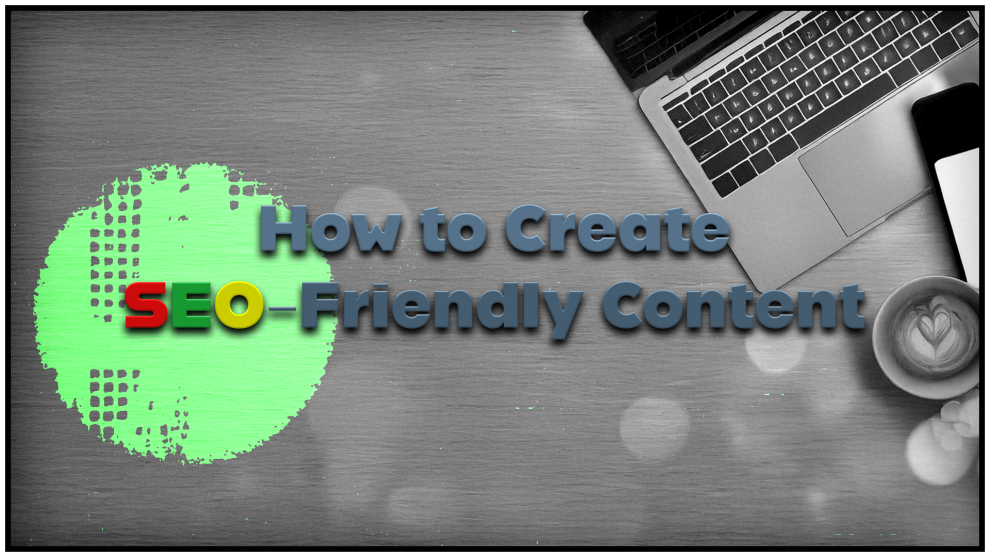If you’re new to blogging or creating content for the internet, you may be unaware that SEO is as relevant now as it was when the internet took off. Search engines still have to have a way to list content that is of exceptional value. That is one of the most fundamental aspects of the search engine, having valuable content for viewers to read. Moreover, that is also why you must have SEO friendly content on blog posts/articles if you want people to find them.
In this article, we will look at the following Key Points. And if you stick with me till the end, you will be a pro!
Key Points
- Extensive studies confirm that well-structured content directly boosts search visibility and reader engagement.
- Clear evidence shows that strategic use of headers, internal links, and concise paragraphs positively impacts rankings.
- Leading WordPress plugins like Yoast SEO and Rank Math effectively streamline content optimization.
- While experts debate specific linking approaches, fundamental best practices remain consistent across the industry.
Introduction to SEO-Friendly Content
Effective search engine optimization extends beyond keyword placement—structure plays a vital role. When you organize content strategically, search engines can better interpret your pages while keeping visitors engaged. Let’s explore essential components and WordPress tools that will help you create content that satisfies both users and search algorithms.
Key Elements for SEO-Friendly Structure
Focus on these fundamental components:
- Headings: Structure content with H1 for titles, H2 for main sections, and H3 for subsections. Naturally incorporate keywords to highlight relevance.
- Paragraphs: Begin with strong topic sentences, add supporting points, and maintain brevity (3-5 sentences) to enhance readability.
- Internal Linking: Connect related pages using descriptive anchor text to strengthen site architecture and boost SEO.
- Images: Add relevant alt text and descriptive filenames to improve accessibility and search performance.
- Meta Tags: Create compelling title tags (under 60 characters) and meta descriptions (under 160 characters) to enhance search listings.
WordPress Plugins to Simplify the Process
WordPress users can streamline their SEO efforts with these powerful plugins:
- Yoast SEO delivers comprehensive content analysis, readability scoring, and smart linking suggestions while you write (Yoast SEO Features).
- Rank Math integrates advanced SEO tools, schema markup, and intelligent linking features for thorough optimization (Rank Math Features).
- Link Whisper generates smart internal linking recommendations, enhancing efficiency and relevance (Link Whisper Overview).
- The SEO Framework emphasizes automated optimization, featuring meta tag generation and performance monitoring (The SEO Framework).
These tools automate best practices, particularly for internal linking and content readability.
Detailed Analysis of Creating SEO-Friendly Content Structure
In today’s digital landscape, creating content that ranks well on search engines like Google remains crucial for driving organic traffic and engaging audiences. This comprehensive guide examines the essential elements of SEO-friendly content structure, specifically for WordPress users, by exploring key components, utilizing effective tools, and implementing proven writing strategies. We focus on maximizing visibility, enhancing user experience, and ensuring optimal content crawlability and indexing.
Understanding SEO-Friendly Content Structure
SEO-friendly content structure involves organizing content strategically to engage readers while satisfying search engine requirements. Studies from SEO-Friendly Content – A Beginners Guide demonstrate that disorganized content reduces reader engagement and search rankings. Effective content incorporates a clear hierarchy with H1 titles, H2 subheadings, and H3 subsections. As highlighted in Building an SEO-Friendly Website Structure, this structured approach helps search engines understand content relevance while enhancing user experience. The key lies in balancing technical SEO requirements with engaging, easy-to-navigate content that drives organic traffic and conversions.
Key Elements of SEO-Friendly Content Structure
Creating high-ranking content requires careful attention to several crucial components:
Proper Use of Headings
Headings serve as content navigation aids while boosting SEO performance. According to How to Use Headings for SEO, effective heading structure starts with an H1 title containing the primary keyword, followed by H2 and H3 tags for logical content breakdown. Google’s John Mueller confirms in How To Use Header Tags: SEO Best Practices that this hierarchy helps search engines grasp page topics. Best practices include crafting descriptive headings, using single H1 tags per page, and naturally incorporating keywords without overoptimization.
Paragraph Structure and Readability
Well-structured paragraphs form the foundation of engaging content. How to Write Clear and SEO-Friendly Paragraphs recommends starting paragraphs with clear topic sentences, followed by supporting details and smooth transitions. Research from Paragraph Length and Structure for SEO supports using concise paragraphs (3-5 sentences) to improve mobile readability. This approach enhances user engagement and reduces bounce rates while signaling quality content to search engines. Tools like Yoast SEO help maintain optimal readability standards.
Internal Links
Adding Internal links strategically connects related content across your website, boosting navigation and making it easier for search engines to crawl your site. Internal Linking for SEO: Why and How? highlights the importance of linking to category and tag pages, using clear anchor text, and ensuring key pages receive more internal links. To strengthen your internal linking strategy, link to new content from existing posts, as outlined in Internal Links for SEO: Best Practices 2024. Make sure visitors can reach any page within three clicks to distribute link equity effectively, enhance site structure, and improve rankings. Adapt these practices based on your site’s size and content volume.
Image Optimization
Images make content more engaging but need proper optimization for SEO success. According to Enhance Your Article’s Visibility: A Guide to SEO for Journal Authors, add relevant keywords in alt text and use descriptive file names to boost accessibility and indexing. Compress your images to improve page speed, which directly impacts rankings, as highlighted in On-Page SEO: The Definitive Guide. These steps help search engines understand your visual content while enhancing user experience.
Meta Descriptions and Title Tags
While meta descriptions and title tags sit outside your content structure, they play a crucial role in SEO. A Guide to Content SEO recommends limiting title tags to 60 characters and meta descriptions to 160 characters for full display in search results. Create compelling meta elements that include target keywords and drive clicks by matching user intent, as recommended in SEO Starter Guide: The Basics.
Tools and Plugins for WordPress
WordPress users can leverage plugins to create and maintain SEO-friendly content structure effectively. Let’s explore the top options:
- Yoast SEO: This powerful plugin streamlines content optimization through comprehensive analysis, readability assessments, and smart internal linking recommendations. As detailed at Yoast SEO Features, it evaluates your writing in real-time, checking sentence structure, paragraph length, and transition word usage. The plugin’s AI-powered suggestions help you create well-structured content that appeals to both readers and search engines.
- Rank Math: This versatile plugin, featured at Rank Math Features, analyzes content across 40 key factors and provides schema markup capabilities for enhanced search visibility. Its seamless integration with popular page builders like Gutenberg and Elementor enables deep SEO optimization directly within your editing workflow, making content enhancement effortless and efficient.
- Link Whisper: Transform your internal linking strategy with this intelligent plugin that generates automatic link suggestions based on content analysis. According to Link Whisper Overview, it particularly benefits large websites by maintaining robust internal link structures without manual intervention. The plugin’s effectiveness is confirmed by 14 Best Internal Linking Plugins for WordPress.
- The SEO Framework: Perfect for those seeking simplicity, this lightweight solution automatically handles crucial meta tags and monitors content against 70+ SEO factors. As highlighted at The SEO Framework, its SEO Bar provides instant feedback, while extensions like Focus enhance content structure analysis. Its effectiveness is validated by The 12 Best WordPress SEO Plugins.
These essential plugins, backed by research from 20 Top-Tier WordPress Plugins for SEO in 2025, efficiently manage key SEO tasks including readability analysis, internal linking, and schema implementation, ensuring your content meets current SEO standards.
Best Practices for Writing SEO-Friendly Content
Creating high-ranking content requires following specific guidelines, particularly focusing on active voice, concise sentences, and effective transition words:
- Use Active Voice: Active voice creates direct and impactful content that engages readers instantly. According to SEO Writing: Top 42 Tips, sentences like “Our team delivered outstanding results” grab attention better than “Outstanding results were delivered by our team.” This straightforward approach boosts readability and aligns perfectly with search engines’ preference for clear, user-friendly content.
- Balance Sentence Length: Mix up your sentence structure to keep readers engaged, suggests 18 Tips to Write SEO-Friendly Content That Ranks in 2025. Short, punchy sentences improve scanning speed. Longer sentences add necessary detail and context. This balanced approach creates dynamic content that reads smoothly across all devices, helping reduce bounce rates significantly.
- Incorporate Transition Words: Connect your ideas smoothly with transition words like “moreover,” “consequently,” and “furthermore,” as highlighted in 10 Actionable SEO Content Writing Tips. These connectors create a natural flow between thoughts, boost readability scores, and keep readers engaged throughout your content. Search engines recognize this improved coherence, potentially boosting your rankings.
- Focus on Quality and Value: Deliver content that solves problems and answers questions comprehensively, emphasizes Mastering SEO Content Writing. Quality content attracts natural backlinks and shares, building authority in your niche. 12 Tips for Writing SEO-Optimized Content in 2025 confirms that valuable content remains key to ranking success.
Tools like Yoast’s readability checker help ensure your content meets both search engine requirements and reader expectations in 2025’s evolving digital landscape.
Conclusion
Effective SEO content structure combines multiple elements to boost visibility and engage readers. Strategic headings, scannable paragraphs, smart internal linking, optimized images, and compelling meta descriptions work together to create search-friendly content. WordPress users benefit from powerful tools like Yoast SEO, Rank Math, Link Whisper, and The SEO Framework, streamlining optimization processes. By implementing active voice, varied sentence lengths, and smooth transitions, you create content that resonates with readers while meeting SEO requirements. These strategies help you develop content that not only ranks well but drives meaningful engagement in 2025’s competitive digital space.
If you are looking for more content on Blogging, check the Skint or Mint Section: Blogging
Key Citations
- Create SEO-Optimized Content: A Complete Guide
- Crafting an SEO-Friendly Site Architecture
- Maximize SEO Impact with Strategic Headings
- Writing SEO-Optimized Paragraphs That Convert
- Internal Linking Strategy: Best Practices
- Boost Your Content Visibility: SEO Essentials
- Master Content SEO: Step-by-Step Guide
- Google’s SEO Guide: Core Principles
- Essential Yoast SEO Capabilities
- Rank Math: Complete Feature Overview
- Link Whisper: Smart Internal Linking
- The SEO Framework Explained
- Top WordPress SEO Plugins for 2025
- SEO Writing Mastery: Essential Tips
- Create High-Ranking Content in 2025
- Proven SEO Content Writing Strategies
- SEO Content Optimization Guide 2025
- Expert SEO Content Writing Techniques
- Best WordPress Internal Linking Tools








